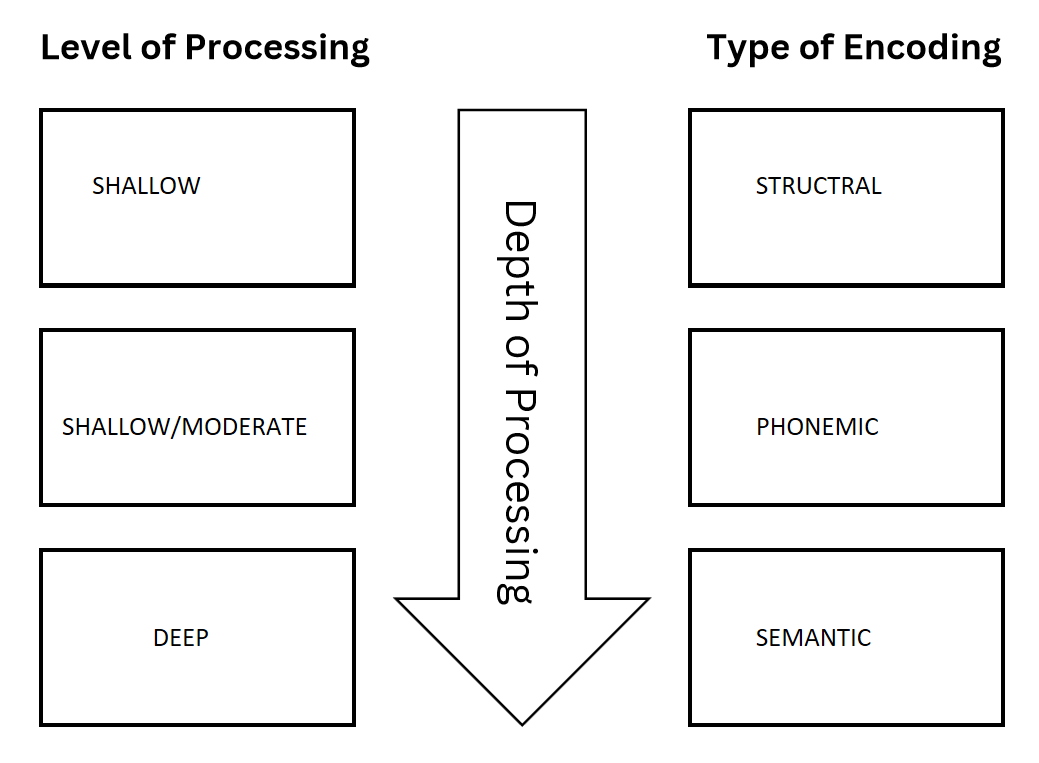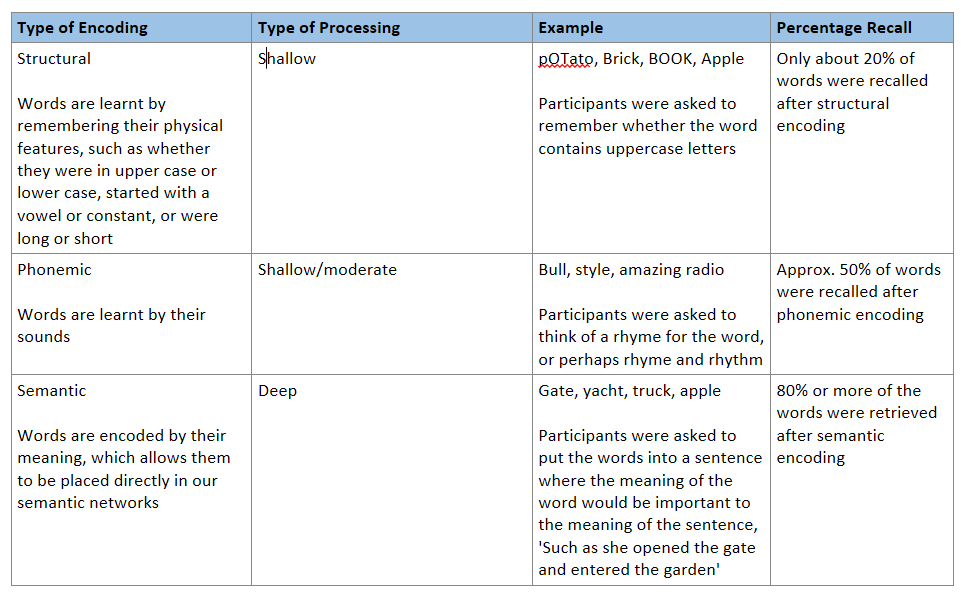Unit 3 - Forgetting and learning (psych)
1/44
There's no tags or description
Looks like no tags are added yet.
Name | Mastery | Learn | Test | Matching | Spaced |
|---|
No study sessions yet.
45 Terms
Forgetting
The inability to retrieve memories
4 types of forgetting
Retrieval failure
Interference
Motivated Forgetting
Decay theory
Retrieval failure (type of forgetting)
The inability to consciously recall information stored in the LTM due to an absence of retrieval cues
Retrieval cues: mental reminders/prompts that we create to assist with our recollection later. They come in a range of formats including context-dependent
Interference (type of forgetting)
When info in the LTM store cannot be retrieved due to it being disrupted by similar information
2 types of interference
Proactive interference: when OLD information moves forward and interferes with our retrieval of NEWER information
e.g. remembering a friends new phone number after memorising their old number
Retroactive interference: when NEW information interferes with the retrieval of OLDER information stored in the LTM
e.g. driving a manual car (your first car) after driving an automatic car for a month
Motivated forgetting (type of forgetting)
The intentional or unintentional suppression of memories or thought from conscious awareness to minimise emotional distress
can occur consciously = suppression
can occur unconsciously = repression
RUSC - repression unconscious, suppression conscious
Decay theory (type of forgetting)
A theory that suggests that memories fade over time
According to Atkinson and Shiffrin, information is transferred between memory stores and memory traces (evidence of memory) are left behind
These traces disappear rapidly unless information is used quickly or actively rehearsed
Remembering
The process of consciously recalling or becoming aware of past experiences, information or events
The role of the recall (3 methods of retrieval)
Recall
Recognition
Relearning
Recall (method of retrieval)
Retrieving information from LTM with minimal or no cues
cues = stimulus that help us retrieve memories
Three subtypes of recall
Free recall: retrieval of as much info, no cues
Serial recall: the retrieval of info in an order (series)
Cued recall: retrieval is assisted via cues (hints)
Recognition (method of retrieval)
Identifying wanted/correct information from a list that also includes unwanted/incorrect info
recognition yields more remembering than recall
cued recall does not equal recognition
Relearning (method of retrieval)
Involves learning something that you have previously already learnt
quicker the second time → savings score
most sensitive/successful method of retrieval
Levels of processing
Craik and Lockhart (1972) state that the strength and endurance of long term memories depend on the depth of cognitive processing
*depth = meaning derived from stimuli
2 depths of processing: shallow processing and deep processing

Shallow processing (levels of processing)
Involves structural and phonemic rehearsal
Structural: processing using the physical appearance of the word
Phonemic: processing based on the verbal sounds related to the word
*maintenance rehearsal is used
Deep processing (levels of processing)
Semantically encode/process words by attaching meaning to them
elaborative rehearsal is used
more success using deep processing than shallow
linking info already in the LTM
Table of levels of processing

Study: Depths of Processing
Craik and Tulving (1975) created a study - depths of processing and the retention of words in episodic memory
Aim (study: depths of processing)
To determine the impact the levels of processing have on the recall of memory
Method - participants (study: depths of processing)
60 male and female students were recruited using convenience sampling from University of Toronto
Method - materials (study: depths of processing)
A list of 60 words
A set of questions
A second list of 180 words (incorporating the original 60)
Method - design (study: depths of processing)
IV: type of encoding (structural, phonemic, semantic)
DV: the number of words recalled
Procedure (study: depths of processing)
Participants choose to take part in a study on perception (deception used). They are randomly allocated into 1 of 3 conditions. All participants are given a list of 60 words that have a corresponding set of questions.
The questions are designed to fit either structural, phonemic or semantic encoding e.g. capital or lowercase, rhyming and context in a sequence.
Participants are then given a list of 180 words (no questions). They are asked to indicate which words were on the original list.
Key findings (study: depths of processing)
Participants in the semantic encoding condition recalled a higher percentage of words than the participants in the structural and phonemic conditions
This is because the semantic condition required deep processing whereas the structural/phonemic condition required shallow processing
Percentage of recall:
semantic (deep): 80%
phonemic (shallow): 50%
structural (shallow): 20%
Contributions to psychology (study: depths of processing)
The study provided empirical evidence which inspired further studies of a similar nature
The results were similar each time the study was repeated, therefore, high in reliability
Criticisms/limitations (study: depths of processing)
Ethical guideline of debriefing was violated
It was unclear whether it was depth of processing or time/effort that produced the results
Time/effort could be either an extraneous or confounding variable
2 types of rehearsal strategies
Maintenance rehearsal
Elaborative rehearsal
Maintenance rehearsal (type of rehearsal strategy)
Strategy that keeps the information in our STM for longer than its 15-30 second duration
This occurs through repeating the information over and over *no meaning added
Elaborative rehearsal (type of rehearsal strategy)
Strategy that involves attaching meaning to information that I want to encode in LTM
Successful encoding involves linking the new information with information already being stored in the LTM
Ebbinghaus (1885) and the forgetting curve
Ebbinghaus (1885) results show that after learning, forgetting occurs rapidly for 20 minutes after, moderately for the remaining hour (40 minutes) and then gradually for 31 days
If the material is repeated/over-learnt, it will be retained for longer
Supports the decay theory
Traumatic memory loss
Chronic traumatic encephalopathy (CTE) is a progressive brain disease associated with repeated traumatic brain injuries that causes problems with cognition and memory.
This disease is not well understood, it is somewhat agreed that it is caused by multiple traumatic brain injuries commonly associated with:
Military combat due to exposure to explosive blasts
Sports such as boxing, ice hockey, soccer, rugby and football
The degeneration of brain cells caused by CTE is thought to be to related to the development of memory problems
How CTE impacts behaviour
impulsive behaviour
aggressive behaviour
How CTE impacts emotion
Emotional instability in the form of intense mood swings
depression
Degenerative Memory Loss - Alzheimer’s disease (AD)
Alzheimer’s disease (AD) is a brain disease that involves the degeneration of neurons in regions of the brain that are involved in cognitive skills and memory formation and retrieval
Two causes of AD
IF Q IS 1-2 MARKS: neuron degeneration
IF MORE THAN 2:
Neurofibrillary tangles, amyloid plaques and neuron loss are the causes of AD
Neurofibrillary tangles
Neurofibrillary tangles involve a protein called tau, mainly found in the axon and dendrites of neurons.
It clumps together, breaking down the microtubule structure that supports the axon
This prevents normal transmission
*within neurons
Amyloid plaques
Beta amyloid is found in abnormally high levels of people with AD
They clump together to form amyloid plaques
The plaques clump together between neurons and interrupt functioning
*between neurons
Brain areas associated with degenerative memory loss
The degeneration is more prevalent in the hippocampus, amygdala and cerebral cortex - all areas that are associated with memory, reasoning and language processing
Impact of Alzheimer’s disease on behaviour
Lost/disoriented
Habit change
Impact of Alzheimer’s disease on emotion
Fearful/suspicious
Anxious
Drug induced memory loss
Wernicke Korssakof syndrome (WKS) is a neurological disorder caused by a thiamine deficiency (vitamin B)
Effects of Wernicke Korsakoff Syndrome (WKS)
Leads to the degeneration of brain cells and is characterised by difficulties forming new memories and retrieving stored memories
The degeneration of brain cells occurs in the thalamus, hypothalamus and mamilliary bodies
Chronic alcohol abuse leads to a thiamine deficiency which then develops into WKS
2 stages of WKS
Wernicke encephalopathy
this is severe yet reversible
Korsakoff amnesic syndrome
chronic and irreversible
Impact of WKS on behaviour
Confabulation (making up stories to fill in gaps in memory)
Slurred speech, poor coordination and balance (Ataxia)
Impact of WKS on emotion
Frustration
Apathy